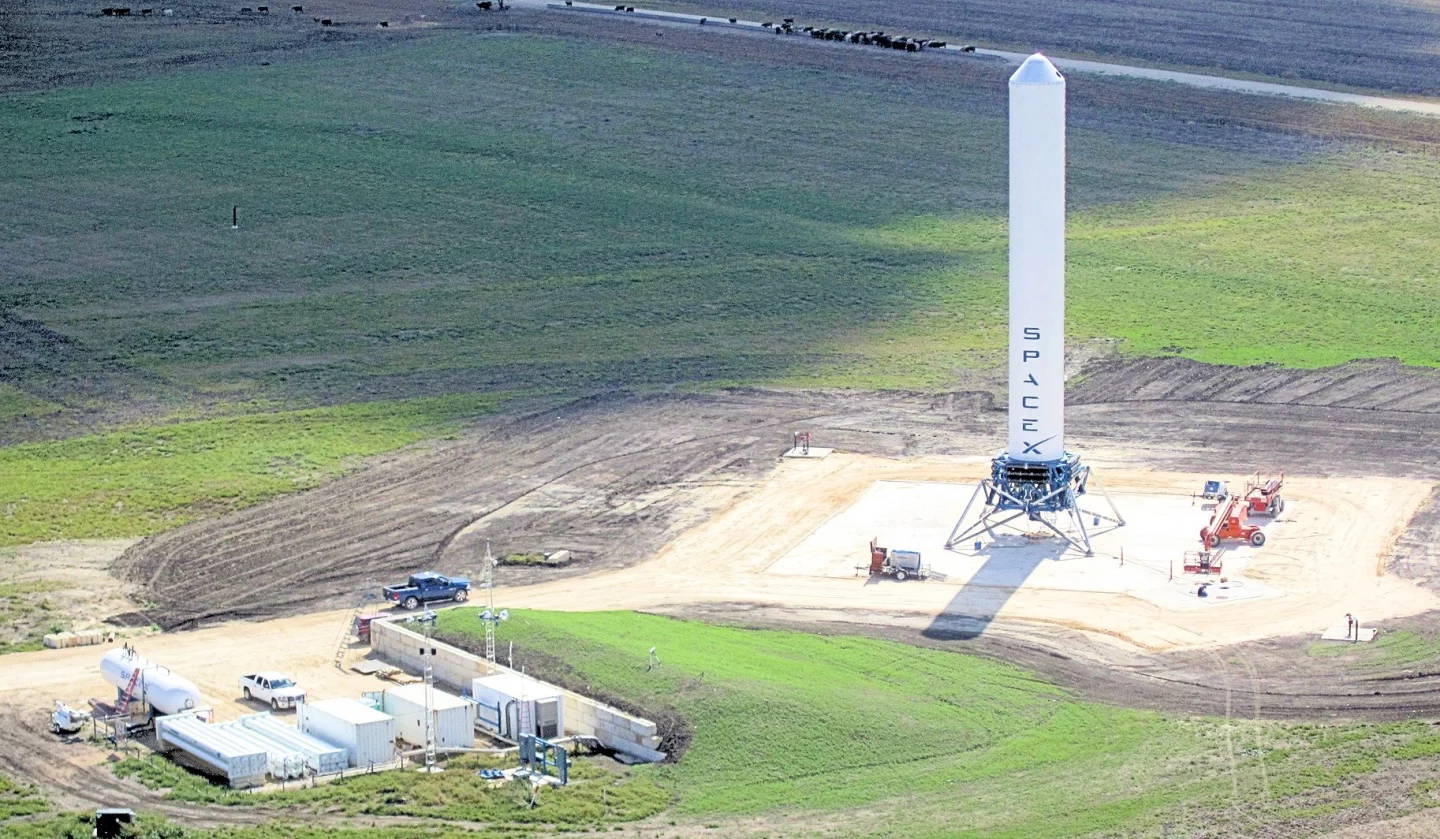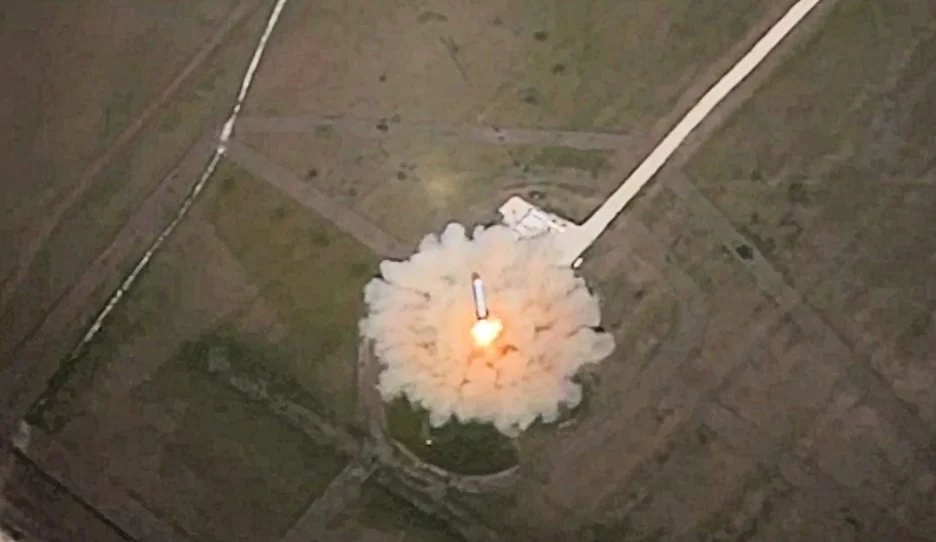SpaceX made another successful Grasshopper test flight last week, which was also the last flight for Grasshopper v1.0. Its swan song lasted 80 seconds, during which time Grasshopper reached an altitude of 744 meters (nearly half a mile), more than twice the previous record. Grasshopper v1.1 is well along the road to flight tests.
Following the successful test flight carried out on October 8, SpaceX's Grasshopper v1.0 is to be retired, and will be replaced by Grasshopper v1.1, which is also known as the Falcon 9 Reusable development vehicle. Grasshopper v1.1 will be based at New Mexico's Spaceport America following initial low-level testing in SpaceX's Texas flight test field.

Grasshopper v1.1 is being made from a Falcon 9 v1.1 first stage tank, which at 68.4 meters (224 ft) in length is more than twice the height of v1.0. It will have a 2 metric ton set of retracting landing legs spanning about 18 meters (60 feet). The legs will be extended into landing position using high pressure helium.
The new version of Grasshopper will be powered by the same nine Merlin 1D rocket engines as are used in the Falcon 9, in contrast to v1.0, which contained only one Merlin 1D. The huge thrust of a set of nine Merlin 1D engines will have to be delicately controlled to safely manoeuvre the Grasshopper at landing. Fortunately, the Grasshopper's (and eventually the Falcon 9 first stage's) weight is quite small when landing, so one need not be too concerned about the performance hit resulting from not using all the fuel during the boost phase of the flight.SpaceX has built a 30x30 meter (100x100 ft) launch pad at Spaceport America about 7 km southwest of the main facilities, for which they will pay $6,600 per month to cover the lease and $25,000 per Grasshopper flight. The flight tests at Spaceport America in New Mexico will eventually reach supersonic speeds and altitudes up to about 55 miles (90 km). Musk has hinted that he expects tests to reach hypersonic velocities perhaps by the end of 2013, although this seems rather a large jump to make in the next two and a half months.
Development of the Grasshopper is not being undertaken simply to remind people of how spaceships are supposed to take off and land. SpaceX is banking on its ability to develop a reusable rocket launching system to carry payloads to and from orbit, as that ability should greatly reduce the incremental cost of multiple launches. This latest launch was captured by a camera on a hexacopter that appears to be hovering at an altitude of around 1,500 feet (450 meters).
Footage from the flight can be seen below.
Source: SpaceX





